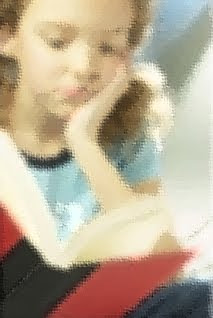Simple Warli Art
I had always been fascinated by one painting which I had on my bedspread. It depicted the daily life of the rural people, almost similar to the
Then I found out, such paintings were called Warli paintings which basically used rice flour as a medium to make simple lines and geometric figures which looked amazing but still had simplicity in it. The myth that if we use complex colors and shape then only a piece of work would look great is proved wrong by these simple but beautiful paintings, which reflects the daily life and still look alive with all the forest activities. It is done through simple folk symbols drawn with bold, easy strokes with most minimal colors basically white since none is needed to draw attention to their message. A single painting may depict many different stories all happening simultaneously. If we look carefully we can see their huts, hunting,  harvesting, palms, shrubs, birds, bullocks, tiger and people in group dancing or celebrating, some alone going to work, some in pairs, such are the scenes in the painting, forming sometimes a story.
harvesting, palms, shrubs, birds, bullocks, tiger and people in group dancing or celebrating, some alone going to work, some in pairs, such are the scenes in the painting, forming sometimes a story.
Warli Art was first discovered in the early seventies.The origin of Warli painting is Maharashatra, an Indian state. Warli is the name of the largest tribe found on the northern outskirts of Mumbai, in  he monsoon. Thus their paintings are also influenced by the seasonal cycle as their life around them is directly reflected in the paintings.At harvest time and at weddings and births, their homes are decorated with a vocabulary of patterns. This is the tradition which gave birth to Warli paintings. A Warli painting contains all the events of the past, the stillness of the present and the possibilities of the future within it.
he monsoon. Thus their paintings are also influenced by the seasonal cycle as their life around them is directly reflected in the paintings.At harvest time and at weddings and births, their homes are decorated with a vocabulary of patterns. This is the tradition which gave birth to Warli paintings. A Warli painting contains all the events of the past, the stillness of the present and the possibilities of the future within it.
These tribal paintings of
 but they still look best on the walls.A huge murals of Warli painting surely would look amazing. The Warli huts are first smeared with a paste of cowdung. After drying a coating of red mud is applied to give body and texture to the background. Pounded rice mixed with milk and water and red sindur are applied with a brush made from the twigs of trees. White is the colour in which the image of the goddess is created since this colour is held to be sacred and pious.Rest of the figures are drawn in red and yellow. The warli’s have adapted to the new challenges in the market, but still they basically maintain their traditionality. The real beauty of the Warli paintings are its simplicity with very few colors.All I can say about them is that they are simply fantastic.
but they still look best on the walls.A huge murals of Warli painting surely would look amazing. The Warli huts are first smeared with a paste of cowdung. After drying a coating of red mud is applied to give body and texture to the background. Pounded rice mixed with milk and water and red sindur are applied with a brush made from the twigs of trees. White is the colour in which the image of the goddess is created since this colour is held to be sacred and pious.Rest of the figures are drawn in red and yellow. The warli’s have adapted to the new challenges in the market, but still they basically maintain their traditionality. The real beauty of the Warli paintings are its simplicity with very few colors.All I can say about them is that they are simply fantastic.






Comments
Post a Comment